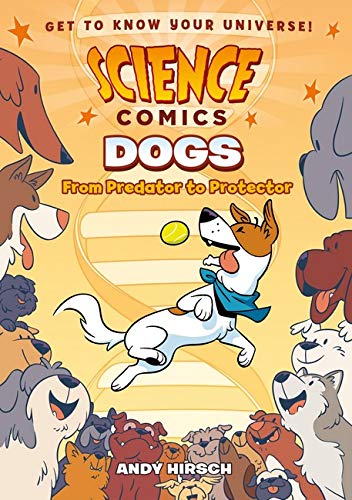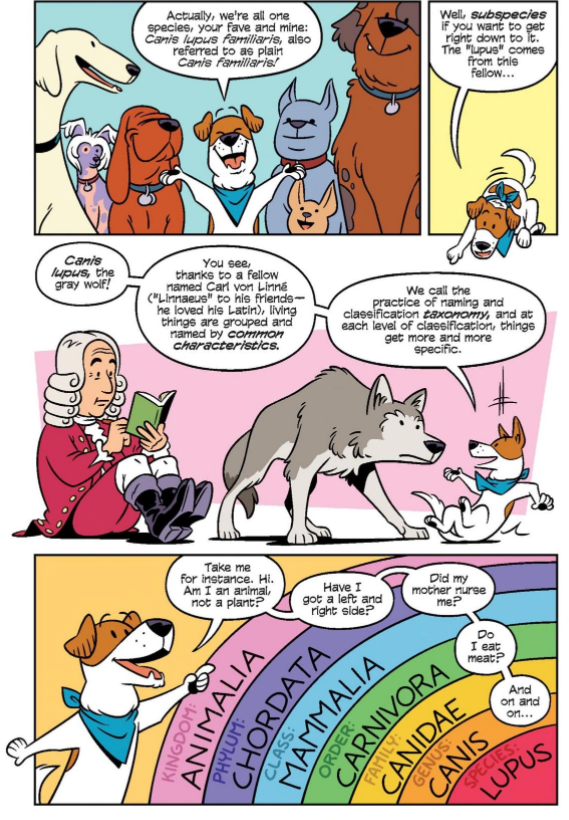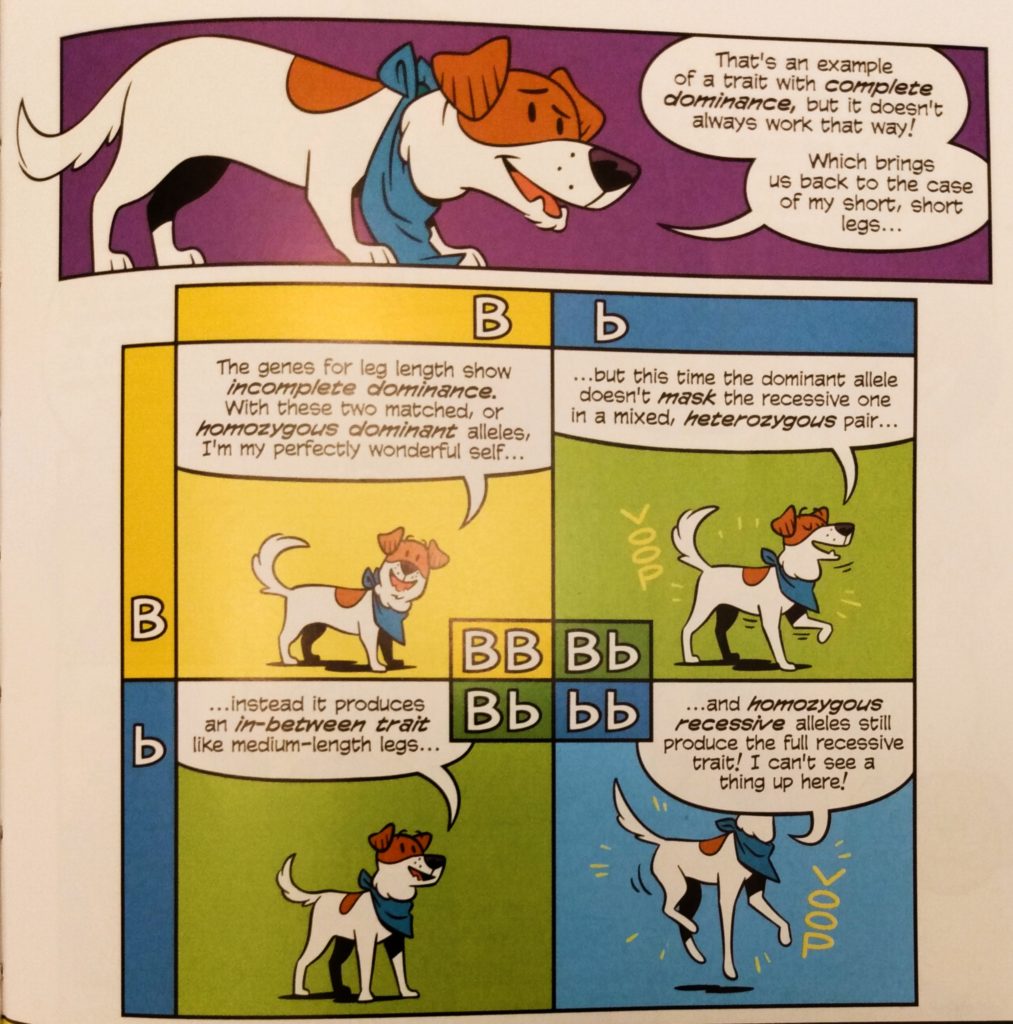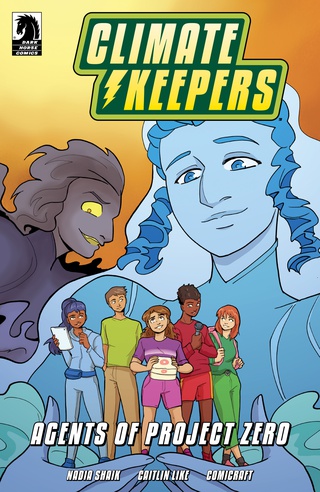“The process of evolution is often slow, sometimes weird, and undeniably awesome. It can turn toes into hooves… pinholes into eyes… and predators into playmates” — Rudy, Dogs: From Predator to Protector, p. 29.
| Creator(s) | Andy Hirsch (author) |
| Publisher | First Second |
| Publication Date | 2017 |
| Genre | Educational, Nonfiction |
| Environmental Themes and Issues | Educational Nature Facts, Anthropomorphism, Animal Rescue |
| Protagonist’s Identity | Rudy: Male mixed breed dog (Nonhuman/Animal) |
| Protagonist’s Level of Environmental Agency | Level 2: Low Environmental Agency |
| Target Audience | Middle Grade (8 to 12 years) |
| Settings | Unspecified dog park |

Environmental Themes
Andy Hirsch’s Dogs: From Predator to Protector is published as part of the Science Comics series. Each volume of this graphic nonfiction series was created by different authors/illustrators and provides a detailed, scientific introduction to a specific topic, such as coral reefs or trees. A talking mixed breed dog named Rudy narrates Dogs: From Predator to Protector, educating the target audience of middle-grade readers about the origin of dogs and their behavior. The comic begins by depicting the evolution of wolves into dogs. Rudy provides a detailed overview of evolution and natural selection in general, and he also discusses the ways that genetics specifically influence dogs’ appearances and behavior. For instance, the comic includes a series of Punnett squares that teach readers about how dominant and recessive genes determine a dog’s ear shape, leg lengths, and markings. Creator Andy Hirsch also introduces readers to pivotal scientific figures, including Gregor Mendel, who first discovered the basic principles of heredity, and Dmitry Belyaev, who used silver foxes to study the process of domestication.

Other topics covered in the comic include diagrams and facts about dog biology. A lengthy portion of the narrative discusses the different senses of a dog, focusing particularly on dogs’ sight and senses of smell. Rudy also educates readers about the ways that humans used artificial selection to develop different breeds for specific purposes, such as sled dogs and livestock guardians. Additionally, Rudy discusses elements of dog behavior and teaches readers to interpret dog body language, like growls and play bows.

While the comic delivers a wealth of scientific information, creator Andy Hirsch includes humorous dialogue and illustrations that make the narrative more engaging. For example, a running gag centers on Rudy’s quest to retrieve his beloved tennis ball as he continually loses it. Many panels also encourage readers to feel compassion for dogs. One panel, for example, depicts Rudy wearing a shirt and clutching his tale as he remarks, “Just like you, dogs can feel pain, and we don’t like it! I know my tail is great, but please don’t pull it!” (Hirsch 56). Together, the comic’s anthropomorphization of the dogs and the humorous elements promote empathy for animals, while also preventing the comic from seeming overly didactic.
Paratexts
The comic includes a preface written by Julie Hecht and Mia Cobb, two researchers who study the science of dog behavior and cognition. They reflect on the historical treatment of dogs and debunk several common myths about animals. For instance, they criticize dominance-based training as misinformed, writing that “the dog of your parents’ day was thought to be a wolf in dog’s clothing, vying for control over people and needing to be kept in line. Although some people perpetuate this myth today, we now know that the dog of today is distantly removed from this wolf ancestor. Instead, dogs are not trying to control us, and most disputes between dogs and humans arise from miscommunication” (Hirsch, n. pag.). By debunking the myth that owners must dominate their dogs, the preface promotes more compassionate and science-based approaches to training.
Additionally, the comic’s back matter includes a glossary of relevant terms and a list of additional resources. The paratext also features a one-page comic featuring Rudy as he directly appeals to the reader to consider adopting a shelter dog or find a reputable breeder.



